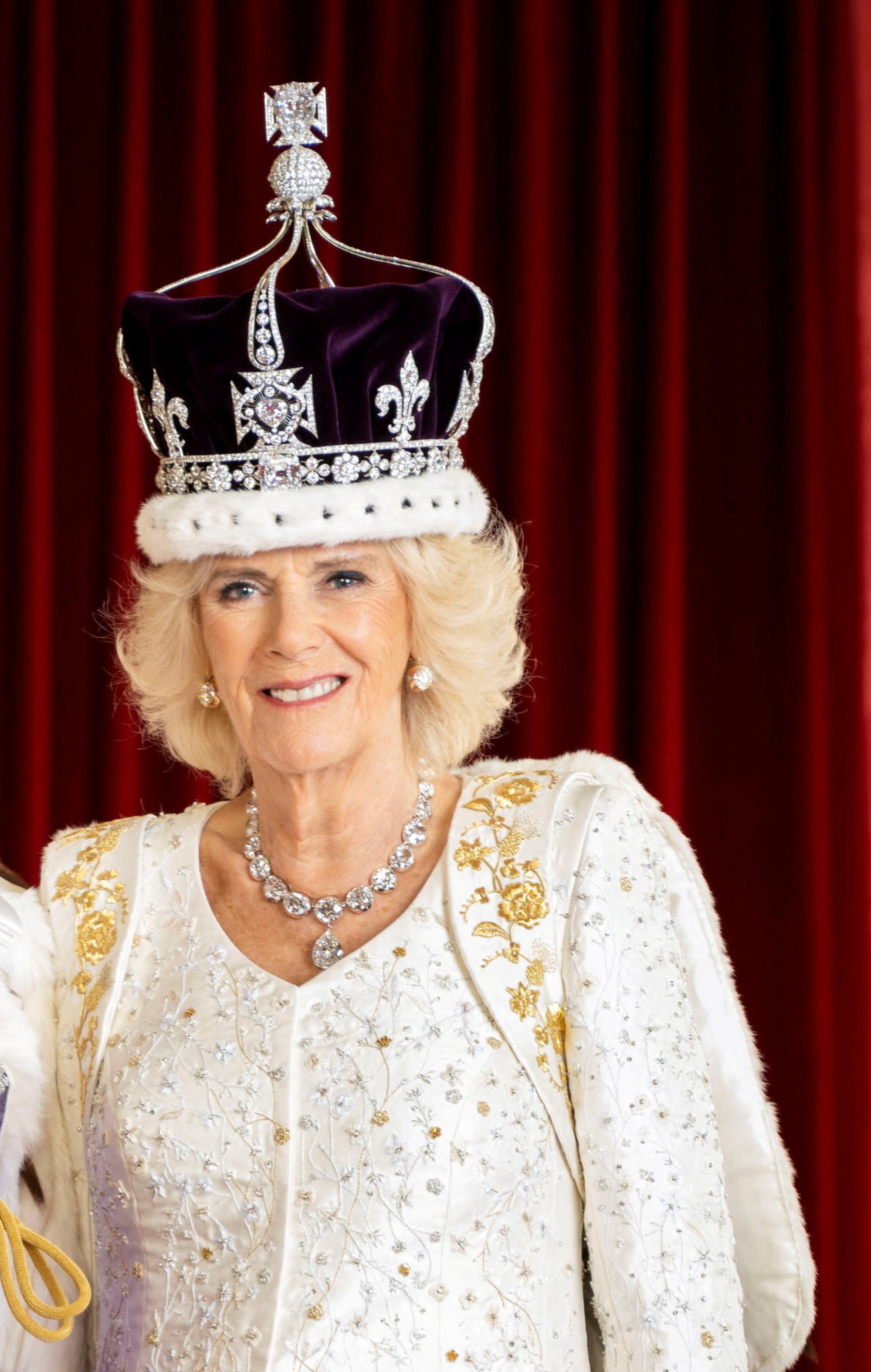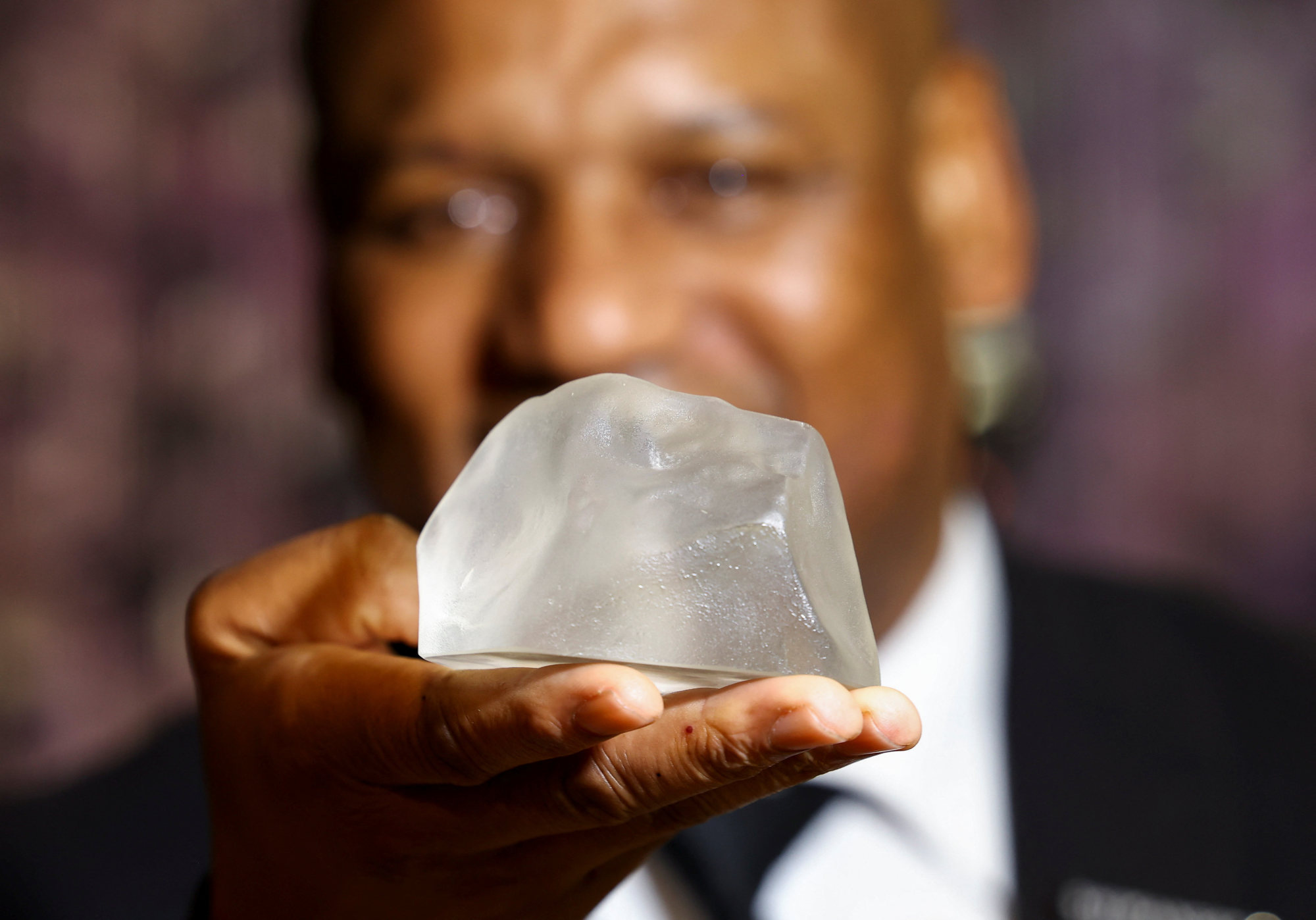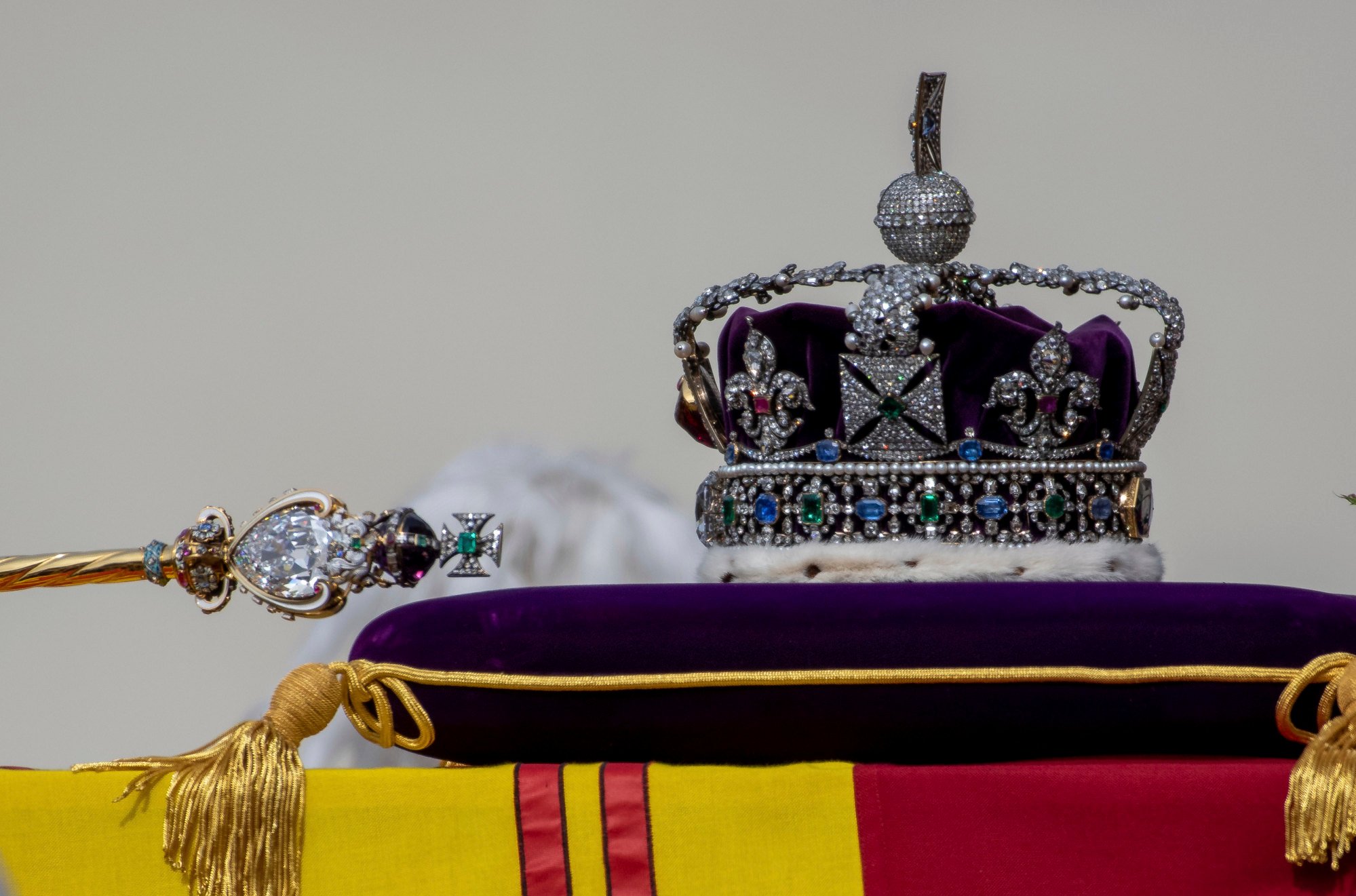Inside the dark history of Britain’s Crown Jewels: King Charles and Queen Camilla wore the Lahore diamond, the Cullinan diamonds and the Black Prince’s Ruby at their coronation amid repatriation calls

Now the newly crowned British monarch is facing renewed calls to repatriate the sought-after treasures.

Ahead of King Charles’ coronation, Buckingham Palace assured the public that Queen Camilla would not wear the highly controversial Koh-i-noor diamond during the festivities. But instead she sported the Cullinan diamonds, a collection of gems associated with Britain’s colonial history in South Africa, and the Lahore diamond, another controversial gem.
For many in the now-independent former colonies of British rule, these diamonds, along with others in the royal family’s collection of Crown Jewels, are a reminder of the painful history of exploitation.
We delve into the dark history behind Britain’s Crown Jewels. (Buckingham Palace didn’t immediately respond to request for comment for this story.)
Why is the world fighting over diamonds in Queen Elizabeth’s collection?
1. The Koh-i-noor diamond

Though the Koh-i-noor diamond’s origins are unknown, its first appearance in written record was in 1628. Emperor of the Mughal Empire, Shah Jahan, encrusted his regal throne with the Timur Ruby and the Koh-i-noor diamond, two of the most valued gems of all time, Smithsonian magazine reported.
The empire stretched throughout present-day India, Bangladesh, Pakistan and Eastern Afghanistan. At the time, the Mughal Empire was one of the wealthiest and most powerful parts of the world – modern-day India was the greatest source of diamonds and gems for centuries.

In 1739, the Persian Empire invaded Mughal’s capital of Delhi and left with hordes of gold and gems, including the Koh-i-noor diamond, which the emperor incorporated into an ornate armband. In the 1800s, the Koh-i-noor diamond was included in the inheritance of the prince of the Sikh empire.
Meet the Asian royals who dazzled at King Charles’ coronation

Determined to obtain the jewel of India, the East India Company imprisoned the mother of then-10-year-old Prince Duleep Singh in 1849, Smithsonian magazine reported. He was forced to sign a treaty that would turn the gem, along with most of his family’s riches, over to them in exchange for his mother’s safe return.

2. The Lahore diamond

The Lahore diamond became “property of the state” when the East India Company usurped Fort Lahore in modern-day Pakistan in 1849. Under the same coerced agreement with Duleep, the Lahore diamond was seen as “in part payment of the debt due by the State of Lahore to the British Government and of the expenses of the war”, Snopes reported.
The Royal Collection Trust simply says the Lahore diamond “was presented to Queen Victoria in 1851”. Elizabeth wore it in a necklace for her coronation and Camilla wore the same necklace during her coronation.
18 of the British royal family’s best winter fashion looks
3. The Cullinan diamonds

The Cullinan diamond, discovered in Pretoria, South Africa, in 1905, is the largest diamond discovered in recorded history. Named after South African mining magnate Thomas Cullinan, the diamond was gifted to King Edward VII in 1907 while South Africa was still under British colonial rule.
The gem has also been called the Star of Africa. It originally weighed 3,025 carats and was cut into nine pieces.

Critics have said the exclusion of some Crown Jewels and incorporation of others is just swapping one piece of imperial loot for another with no accountability. South Africans have asked for the diamonds back, Reuters reported ahead of the coronation.
5 richest queens of all time – net worths, ranked: Empress Wu to Cleopatra
4. The Black Prince’s Ruby

The Black Prince’s Ruby is the centrepiece for the Imperial State Crown, a 1.3kg, 2,901-stone-studded headpiece. Despite the name, it’s actually not a ruby but a gem-quality spinel. It is believed to originate from the Badakhshan mines of present-day Tajikistan and Afghanistan.

Harper’s Bazaar reported the jewel is said to have been stolen by King Pedro of Castile and Leon from the Sultan of Grenada. Later, Pedro was offered refuge by Black Prince Edward of Woodstock, the eldest son and heir apparent of King Edward III of England, in exchange for the riches that included the 170-carat gem.
The Black Prince’s Ruby was also notably worn during battle by Henry V, Richard III and Henry VIII. It was later incorporated into the Imperial State Crown in 1838, per the same source.
15 richest British royal family members’ net worths, ranked

The future of the royal collection and cultural archives hangs in the balance as the new king is met with increased calls for repatriation. Until those demands are met, some nations and critics will continue to regard the Crown Jewels as symbols of Britain’s imperial history.

- King Charles and Queen Camilla’s coronation prompted another round of criticism of the royal family’s Crown Jewels, with calls to repatriate the large gems including the Koh-i-noor and Lahore diamonds
- South Africans have asked for the Cullinan diamonds back, which Queen Elizabeth used to wear as brooches, while the Koh-i-noor diamond originated in the Persian Empire